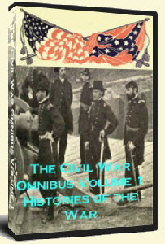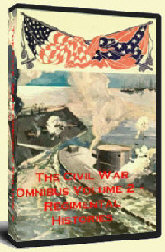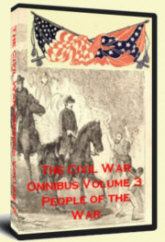War is cruelty. There is no use trying to reform it. The crueler it is, the sooner it will be over. William Tecumseh Sherman
The American Civil War was years in the making. It was inevitable for years before the election of Lincoln to the presidency in 1860, the election that resulted in the secession of Southern states and the formation of the Confederacy. However, despite the fact that war was impending for some time, the people of the United States and the Confederacy – particularly the Confederacy – were unprepared for the reality of life during wartime, and as a result, many civilians suffered the war as keenly as did the soldiers who fought in it.
The first sign for all Americans, North and South, that the war would be felt at home was the disappearance of coinage at the outset of the war. U.S. coins, made from precious metals such as gold, silver, and copper, became scarce as fear of a long, expensive war set in. Hoarding coins became common; and for an economy that relied almost exclusively on coinage, the absence of coins meant that commerce nearly ground to a halt.
Both the United States and the Confederacy attempted to boost consumer confidence by issuing paper currency, including denominations as small as a few cents; while this alleviated some of the problem in Union states, it actually made the problem worse in the Confederacy. At the outset of the war, many Southern sympathizers exchanged their U.S. currency for Confederate currency, but as the war continued and international confidence in the Confederate States of America waned, so did the value of this currency, and many who held Confederate currency found themselves with money worth less than the paper it was printed on.
[amazon-product alink=”0000FF” bordercolor=”000000″ height=”240″]0313335265[/amazon-product]The problem of not having enough money was both literal and figurative during the Civil War, in both regions, but particularly the South. As Northern blockades and attacks on railroads made trade in the South difficult, everyday items became scarce, and inflation grew uncontrollably. The price of staples such as flour, sugar, and coffee became astronomical in the South; at one point, a barrel of flour cost $100.
As the blockades persisted, the need the two regions had for each other became obvious – while Northerners often lacked sugar, sugarcane rotted in the canebrakes in the South, where there were not enough hands to pick it. The Northern embargo on salt meant that the South had to produce its own salt, and even though salt mines existed in the South, mining and transportation of the salt was difficult and oftentimes impossible.
Those states that served as battleground states suffered from looting of food and livestock by both armies that left civilians both hungry and unable produce food on their own land. With no livestock, no seed, and in many cases, not enough able bodies to plant and harvest, the women, children, disabled and elderly of these regions where the war often was as close as the nearest pasture. Homes and barns were often burned by the occupying army after everything of value to the troops was looted. The terror of living in a battle zone was visceral; living without the food, shelter and livestock that were taken or destroyed was a lasting hardship.
The result of the lack of food and even of salt in the South was both immediate and felt for years after the war. Illness and disease caused by malnutrition or ingesting insufficient amounts of key vitamins resulted in death for many, and the harm caused by malnutrition did not go away when the war ended.
While the privation of food was the most widespread and perhaps worst of the sufferings inflicted on civilians during the Civil War, it was hardly the only one. Clothing and shoes became scarce as money to buy the materials to make them became less valuable or disappeared altogether, and people resulted to spinning and weaving their own cloth – when the fibers were available – and making shoe soles from tree bark. Paper and candles became luxury items, and old wallpapers and pine knots were used when necessary.
The Confederacy could not have held out much longer, but it is believed that the terrible conditions that most civilians in the South were enduring toward the end of the war hastened Lee’s surrender. Like the soldiers who marched to the battlefield, those left at home were tired of fighting, of starving, and of living in fear, as well.


